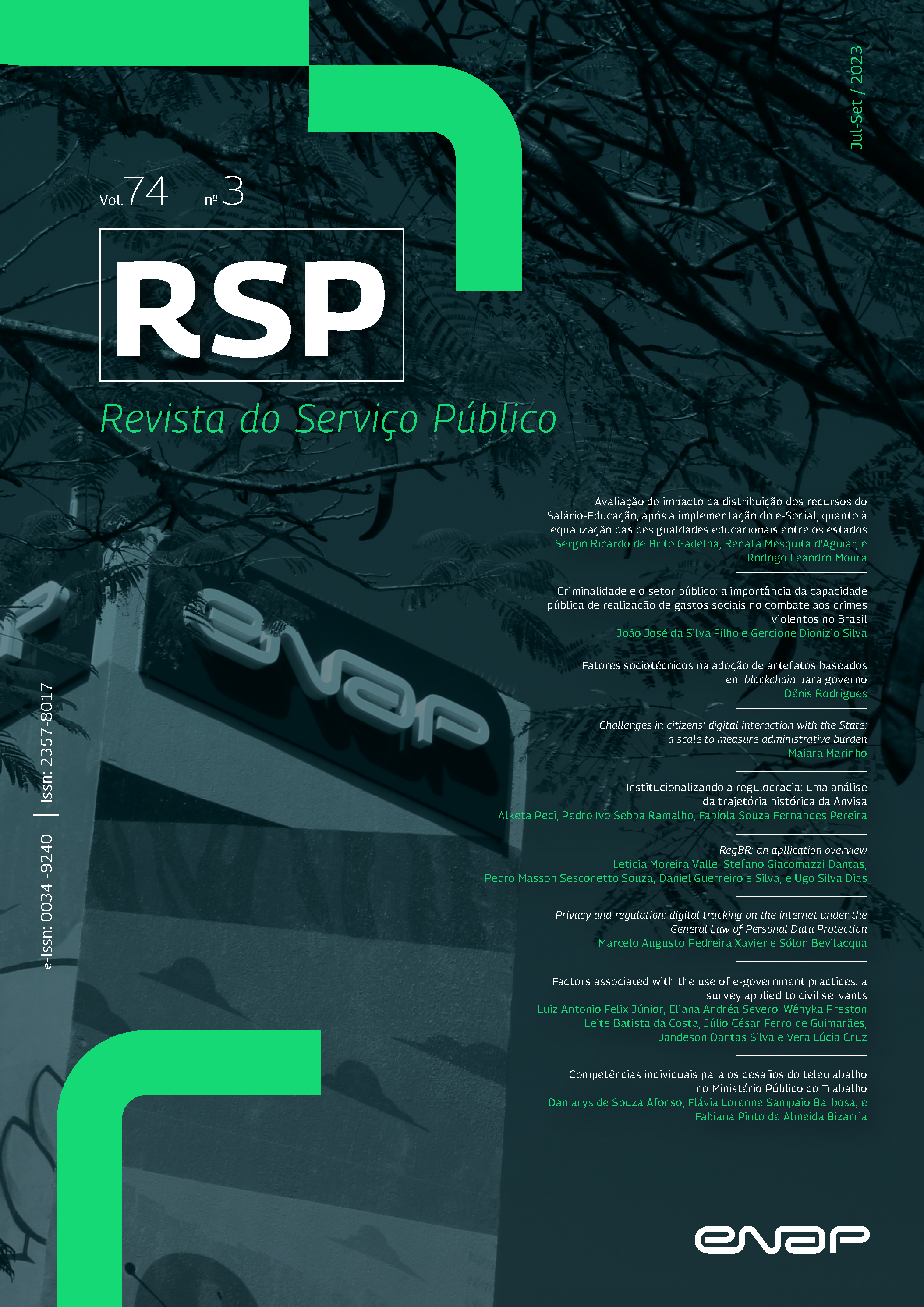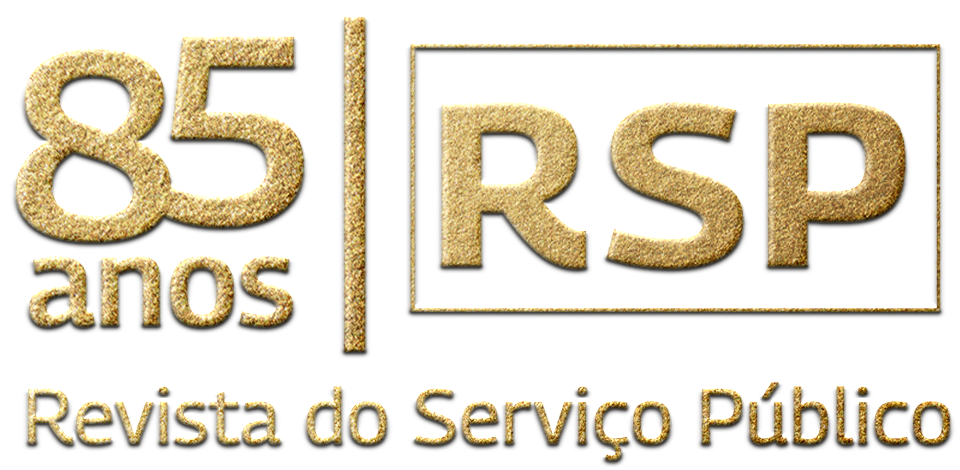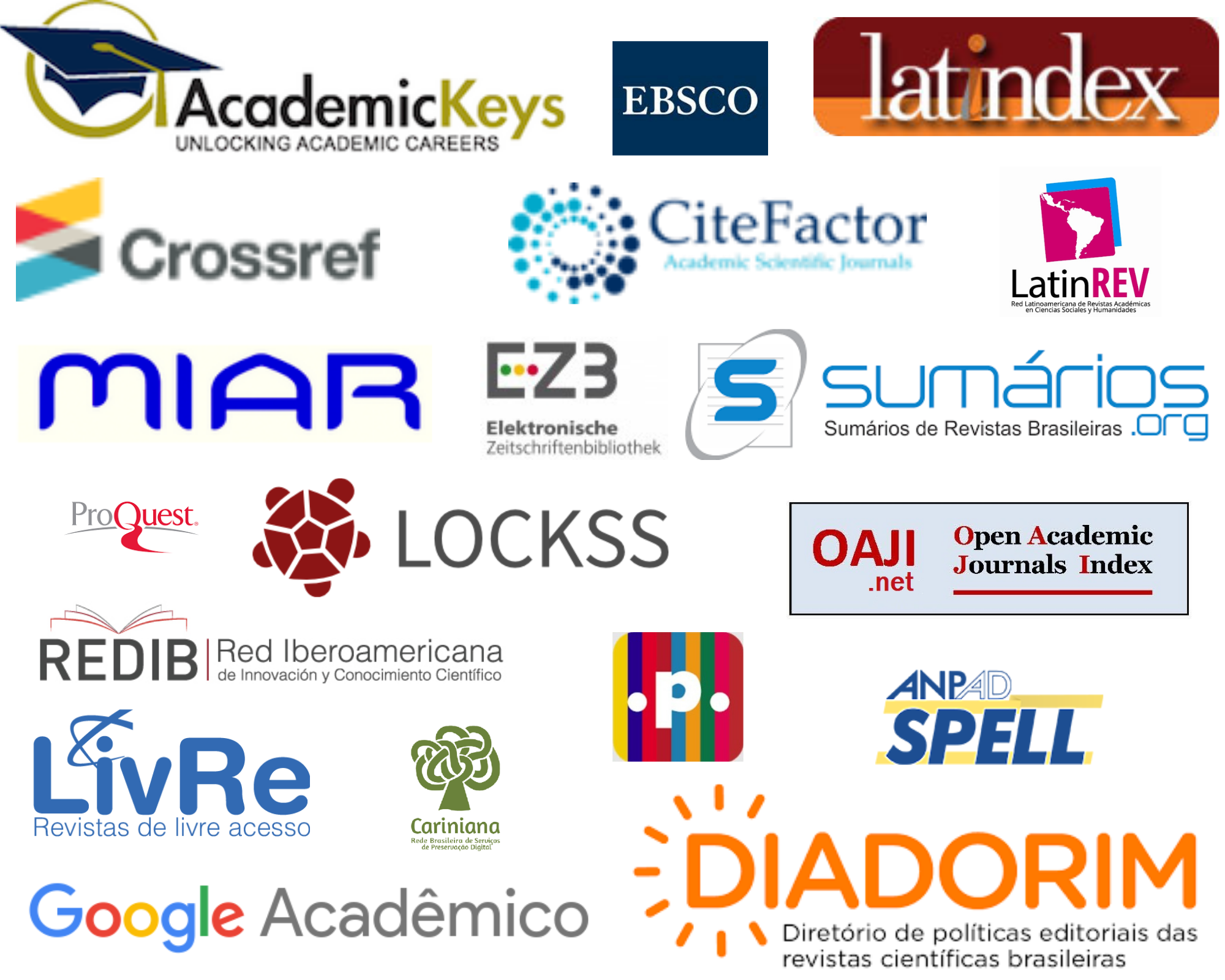Fatores Sociotécnicos na adoção de Artefatos baseados em blockchain para Governo
Palavras-chave:
blockchain, design science research, artefato de SI, governo digitalResumo
Governos têm adotados várias tecnologias procurando melhorar seus serviços, focando em superar os desafios sociais e técnicos que lhes são apresentados. Neste contexto, a inovação digital blockchain tem sido utilizada. Portanto, torna-se necessário compreender estes novos artefatos de Sistemas de Informação - SI desenvolvidos. Ajudando a cobrir este gap, esta pesquisa tem como objetivo identificar os fatores que influenciam neste processo a partir da avaliação sociotécnica, e com o paradigma da Design Science Research, de dois artefatos de blockchain construídos para o governo brasileiro, são eles: Pier e BNDESToken. Os resultados reforçam o que os fatores sociais (políticos e institucionais) são mais difíceis de serem superados que os técnicos, na adoção da inovação digital em estudo.
Downloads
Referências
AKEN, J. E. VAN; ROMME, G. Reinventing the future: adding design science to the repertoire of organization and management studies. Organization Management Journal, 6(1), 5-12, 2009. https://doi.org/10.1057/omj.2009.1
ARANTES, G. M.; D’ALMEIDA JR., J. N.; ONODERA, M. T.; MORENO, S. M. DE B. M.; ALMEIDA, V. BNDESToken: uma proposta para rastrear o caminho de recursos do BNDES. In: SIMPÓSIO BRASILEIRO DE REDES DE COMPUTADORES E SISTEMAS DISTRIBUÍDOS – SBRC, 36., 2018, Campos do Jordão. Anais [...]. Campos do Jordão: UFSCAR, maio 2018a. Disponível em: <http://www.sbrc2018.ufscar.br/wp-content/uploads/2018/04/05-181662.pdf.> Acesso em: 15/05/2021.
ARANTES, G. M.; D’ALMEIDA JR., J. N.; ONODERA, M. T.; MORENO, S. M. DE B. M.; ALMEIDA, V. Improving the process of lending, monitoring and evaluating through blockchain technologies: an application of blockchain in the Brazilian Development Bank (BNDES). In: 2018 IEEE CONFS ON INTERNET OF THINGS, GREEN COMPUTING AND COMMUNICATIONS, CYBER, PHYSICAL AND SOCIAL COMPUTING, SMART DATA, BLOCKCHAIN, COMPUTER AND INFORMATION TECHNOLOGY, CONGRESS ON CYBERMATICS. Halifax, Canada, ago. 2018b.
ATZORI, M. Blockchain Technology and Decentralized Governance: Is the State Still Necessary? Journal of Governance and Regulation - Volume 6, Issue 1, p. 45-62, 2017. https://doi.org/10.22495/jgr_v6_i1_p5
BAHEER, B. A.; LAMAS, D.; SOUSA, S. A Systematic literature review on existing digital government architectures: state-of-the-art, challenges, and prospects. Adm. Sci., v. 10, n. 2, p. 25, 2020. <https://doi.org/10.3390/admsci10020025>.
BARBOSA, A. F.; POZZEBON, M.; DINIZ, E. H. Rethinking e-government performance assessment from a citizen perspective. Public Administration, v. 91, n. 3, p. 744-762, 2013. https://doi.org/10.1111/j.1467-9299.2012.02095.x
BASKERVILLE, R.; BAIYERE, A.; GREGOR, S.; HEVNER, A.; ROSSI, M. Design science research contributions: finding a balance between artifact and theory. Journal of the Association for Information Systems, v. 19, n. 5, p. 358-376, 2018. <https://doi.org/10.17705/1jais.00495>.
BRASIL. Tribunal de Contas da União. Levantamento da tecnologia blockchain. Tribunal de Contas da União; Relator Ministro Aroldo Cedraz. Brasília: TCU, Secretaria das Sessões (Seses), 2020. Disponível em: <https://portal.tcu.gov.br/levantamento-da-tecnologia-blockchain.htm>. Acesso em: dez. 2020.
BRUIJN, H.; JANSSEN, M. Building cybersecurity awareness: The need for evidence-based framing strategies. Government Information Quarterly. Volume 34, Issue 1, January, Pages 1-7, 2017. https://doi.org/10.1016/j.giq.2017.02.007
BURGOS, A. V.; FILHO, J. D. O.; SUARES, M. V. C.; ALMEIDA, R. S. Distributed ledger technical research in Central Bank of Brazil. Central Bank of Brazil. Brasilia - DF, Brazil. 31st August 2017. Disponível em: <https://www.bcb.gov.br/content/publicacoes/outras_pub_alfa/Distributed_ledger_technical_research_in_Central_Bank_of_Brazil.pdf>. Acessado em: fevereiro de 2021.
CONG, L.W.; HE, Z. Blockchain disruption and smart contracts. The Review of Financial Studies, v. 32, n. 5, p. 1754-1797, 2019. http://dx.doi.org/10.2139/ssrn.2985764
CUNHA, M. A. V. C.; MIRANDA, P. R. O uso de TIC pelos governos: uma proposta de agenda de pesquisa a partir da produção acadêmica e da prática nacional. Organizações & Sociedade, v. 20, n. 66, p. 543-566, 2013. https://doi.org/10.1590/S1984-92302013000300010
DE LEOZ, G.; PETTER, S. Considering the social impacts of artefacts in information systems design science research. European Journal of Information Systems, v. 27, n. 2, p. 154-170, 2018. <https://doi.org/10.1080/0960085X.2018.1445462>.
DEPAULA, N.; DINCELLI, E.; HARRISON, T. M. Toward a typology of government social media communication: democratic goals, symbolic acts and self-presentation. Government Information Quarterly, v. 35, n. 1, p. 98-108, 2018. https://doi.org/10.1016/j.giq.2017.10.003
DINIZ, E. H., CERNEV, A. K. RODRIGUES, D. A. DANELUZZI, F. Solidarity cryptocurrencies as digital community platforms. Information Technology for Development - Volume 27 - Issue 3: Special issue on Blockchain for Development. https://doi.org/10.1080/02681102.2020.1827365.
FAGUNDEZ, F. D. Blockchain no BNDES: um estudo de caso sobre inovação em um banco público. 300 f. Dissertação (Mestrado) – Escola Brasileira de Administração Pública e de Empresas, Centro de Formação Acadêmica e Pesquisa, 2019. Disponível em: <http://bibliotecadigital.fgv.br/dspace/handle/10438/28665>. Acesso em: 16/05/2021.
GAGLIARDI, D.; SCHINA, L.; SARCINELLA, M. L.; MANGIALARDI, G.; NIGLIA F.; CORALLO, A. Information and communication technologies and public participation: interactive maps and value added for citizens. Government Information Quarterly, v. 34, n. 1, p. 153-166, 2017. <https://doi.org/10.1016/j.giq.2016.09.002>.
GIL-GARCIA, J. R.; FLORES-ZÚÑIGAC, M. A. Towards a comprehensive understanding of digital government success: integrating implementation and adoption factors. Government Information Quarterly, v. 37, n. 4, Oct. 2020. <https://doi.org/10.1016/j.giq.2020.101518>.
GOLDKUHL, G. E-government design research: towards the policy-ingrained IT artifact. Government Information Quarterly. Volume 33, Issue 3, July, Pages 444-452, 2016.
GREGOR, S.; HEVNER, A. R. Positioning and presenting design science research for maximum impact. MIS Quarterly vol. 37, no. 2, p. 337-355/June, 2013.
HEVNER, A.; BROCKE, J.; MAEDCHE, A. Roles of digital innovation in design science research. Bus Inf Syst Eng, v. 61, n. 1, p. 3-8, 2019. <https://doi.org/10.1007/s12599-018-0571-z>.
HAWLITSCHEK, F.; NOTHEISEN, B.; TEUBNER, T. The limits of trust-free systems: a literature review on blockchain technology and trust in the sharing economy. Electronic Commerce Research and Applications, volume 29, may–june, p. 50-63, 2018. https://doi.org/10.1016/j.elerap.2018.03.005
HSIEH, H. F.; SHANNON, S. E. Three approaches to qualitative content analysis. Qualitative health research, 15(9), p. 1277-1288, 2005. https://doi.org/10.1177/1049732305276687
JANSSEN, M.; RANA, N. P.; SLADE, E.L.; DWIVEDI, Y. K. Trustworthiness of digital government services: deriving a comprehensive theory through interpretive structural modelling. Public Management Review, v. 20, n. 5, p. 647-671, 2018. <https://doi.org/10.1080/14719037.2017.1305689>.
KARKIN, N.; JANSSEN, M. Evaluating websites from a public value perspective: A review of Turkish local government websites. International Journal of Information Management, v. 34, n. 3, p. 351-363, 2014. https://doi.org/10.1016/j.ijinfomgt.2013.11.004
KYAKULUMBYE, S.; PATHER, S.; JANTJIES, M. Towards design of citizen centric e-government projects in developing country context: the design-reality gap in Uganda. International Journal of Information Systems and Project Management, v. 7, n. 4, p. 55-73, 2019. https://doi.org/10.12821/ijispm070403
LABAZOVA, O. Towards a framework for evaluation of blockchain implementations. In: INTERNATIONAL CONFERENCE ON INFORMATION SYSTEMS – ICIS 2019, 40., Munich. Proceedings […]. Munich, Germany, Association for Information Systems 2019, December 15-18.
LIANG, J.; LI, L.; ZENG, D. Evolutionary dynamics of cryptocurrency transaction networks: an empirical study. PLoS ONE 13(8): e0202202, 2018.
https://doi.org/10.48550/arXiv.1808.08585
LOPES, K. M. G.; MACADAR, M. A.; LUCIANO, E. M. Key drivers for public value creation enhancing the adoption of electronic public services by citizens. International Journal of Public Sector Management, v. 32, n. 5, p. 546-561, 2019. <https://doi.org/10.1108/IJPSM-03-2018-0081>.
LUCIANO, R. Aplicação da Smart Contract nos contratos de gás natural: uma análise exploratória. Revista de Administração Contemporânea, v. 22, n. 6, p. 903-921, 2018. https://doi.org/10.1590/1982-7849rac2018180136
MATHEUS, R.; JANSSEN, M.; JANOWSKI, T. Design principles for creating digital transparency in government. Government Information Quarterly, v. 38, n. 1, 2021. <https://doi.org/10.1016/j.giq.2020.101550>.
MATHEUS, R.; RODRIGUES, D. A.; VAZ, J. C.; JAYO, M. Analysis of the openness level of governmental data about the brazilian motor vehicle traffic. Revista Eletrônica de Sistemas de Informação, v. 15, n. 2, p. 1-19, 2016. https://doi.org/10.21529/RESI.2016.1502004e
MERGEL, I. Digital service teams in government. Government Information Quarterly, v. 36, n. 4, 2019. <https://doi.org/10.1016/j.giq.2019.07.001>.
MOMO, F. S.; SCHIAVI, G. S.; BEHR, A.; LUCENA, P. Business models and blockchain: what can change? Revista de Administração Contemporânea, v. 23, n. 2, p. 228-248, 2019. Epub April 18. <https://doi.org/10.1590/1982-7849rac2019180086>.
NAKAMOTO, S. Bitcoin: a peer-to-peer electronic cash system. 2008. Disponível em: <https://bitcoin.org/en/bitcoin-paper>. Acessado em: maio/2017.
ØLNES, S.; UBACHT, J.; JANSSEN, M. Blockchain in government: benefits and implications of distributed ledger technology for information sharing. Government Information Quarterly, 34, p. 355–364, 2017. https://doi.org/10.1016/j.giq.2017.09.007
PANAYIOTOU, N. A.; STAVROU, V. P. Government to business e-services – A systematic literature review. Government Information Quarterly, v. 38, n. 2, 2021. <https://doi.org/10.1016/j.giq.2021.101576>.
PORTO, J. B.; OLIVEIRA, M. The smart cities methodology based on public value: the first evaluation cycle. BAR - Brazilian Administration Review, v. 17, n. 1, e190048, 2020. <https://doi.org/10.1590/1807-7692bar2020190048>.
PRZEYBILOVICZ, E.; CUNHA, M. A.; MEIRELLES, F. S. O uso da tecnologia da informação e comunicação para caracterizar os municípios: quem são e o que precisam para desenvolver ações de governo eletrônico e smart city. Revista de Administração Pública, Rio de Janeiro, v. 52, n. 4, p. 630-649, jul./ago. 2018. https://doi.org/10.1590/0034-7612170582
RAINERO, C.; MODARELLI, G. Blockchain informative infrastructure: a conceptual reflection on public administrative procedures and a citizen-centred view. Information Technology & People, v. 34, n. 4, p. 1252-1284. 2021. <https://doi.org/10.1108/ITP-05-2020-0343>.
RAM, S.; GOES, P. Focusing on programmatic high impact information systems research, not theory, to address grand challenges. MIS Quarterly, v. 45, n. 1, p. 479-483/March 2021. DOI: 10.25300/MISQ/2021/15434.1.5.
RISIUS, M.; SPOHRER, K. A blockchain research framework what we (don’t) know, where we go from here, and how we will get there. Business & Information Systems Engineering 59(6): 385–409, 2017. https://doi.org/10.1007/s12599-017-0506-0
RODRIGUES, D. A. Blockchain em governo: avaliação sociotécnica de artefatos de sistemas de informação. Tese (Doutorado em Administração de Empresas). Fundação Getulio Vargas. São Paulo, 2021.
ROMME, A. G. L.; MEIJER, A. Applying design science in public policy and administration research. Policy & Politics, v. 48, n. 1, p. 149-165(17), 2020. <https://doi.org/10.1332/030557319X15613699981234>.
ROSE, J.; FLAK, L.S.; SÆBØ, Ø. Stakeholder theory for the E-government context: framing a value-oriented normative core. Government Information Quarterly, v. 35, n. 3, p. 362-374, 2018. <https://doi.org/10.1016/j.giq.2018.06.005>.
SA, M. R.; VERSCHOORE, J. R.; MONTICELLI, J. M. The influence of institutional voids in the institutionalization of bitcoins as a currency. International Journal of Business, Economics and Management, v. 8, n. 3, p. 219-233, 2021. <https://doi.org/10.18488/journal.62.2021.83.219.233>.
SAGARIK, D.; CHANSUKREE, P.; CHO, W.; BERMAN, E. E-government 4.0 in Thailand: the role of central agencies. Inf. Polity, v. 23, n. 3, p. 343-353, 2018. https://doi.org/10.3233/IP-180006
SANTOS, G. F. Z.; KOERICH, G. V.; ALPERSTEDT, G. D. A contribuição da design research para a resolução de problemas complexos na administração pública. Revista de Administração Pública. Rio de Janeiro 52(5):956-970, set. - out. 2018. https://doi.org/10.1590/0034-761220170014
SCHOLTA, H.; MERTENS, W.; KOWALKIEWICZ, M.; BECKER, J. From one-stop shop to no-stop shop: an e-government stage model. Government Information Quarterly, v. 36, n. 1, p. 11-26, 2019. <https://doi.org/10.1016/j.giq.2018.11.010>.
SULLIVAN, C.; BURGER, E. E-residency and Blockchain. Computer Law & Security Review: The International Journal of Technology Law and Practice, v. 33, n. 4, p. 470-481, 2017. https://doi.org/10.1016/j.clsr.2017.03.016
TAVARES, E. C.; MEIRELLES, F. S.; TAVARES, E. C.; CUNHA, M. A.; SCHUNK, L. M.; Blockchain in the Amazon: creating public value and promoting sustainability. Information Technology for Development, 27:3, 579-598, 2021. https://doi.org/10.1080/02681102.2020.1848772
TWIZEYIMANA, J. D.; ANDERSSON, A. The public value of E-Government – A literature review. Government Information Quarterly, v.36, n. 2, p 167-178, 2019. https://doi.org/10.1016/j.giq.2019.01.001
WIEDENHÖFT, G. C.; LUCIANO, E. M.; PEREIRA, G. V. Information technology governance institutionalization and the behavior of individuals in the context of public organizations. Inf Syst Front, v. 22, p. 1487-1504, 2020. <https://doi.org/10.1007/s10796-019-09945-7>.
WONG, P.; SINHA, S. R. K.; CHUI, C. Blockchain in manufacturing quality control: a computer simulation study. PLoS ONE, v. 16, n. 3, e0247925, 2021. <https://doi.org/10.1371/journal.pone.0247925>.
YERMACK, D. Corporate governance and blockchains. Review of Finance, Volume 21, Issue 1, p. 7–31, 2017. https://doi.org/10.1093/rof/rfw074
YLI-HUUMO, J.; KO, D.; CHOI, S.; PARK, S.; SMOLANDER, K. Where is current research on blockchain technology? A systematic review. PLoS ONE 11(10): e0163477, 2016.
Downloads
Publicado
Como Citar
Edição
Seção
Licença
Copyright (c) 2023 Revista do Serviço Público

Este trabalho está licenciado sob uma licença Creative Commons Attribution-NonCommercial-ShareAlike 4.0 International License.
- A RSP adota a licença Creative Commons (CC) do tipo Atribuição – Uso Não-Comercial (BY-NC).
- A licença permite que outros remixem, adaptem e criem obra licenciada, sendo proibido o uso com fins comerciais.
- As novas obras devem fazer referência ao autor nos créditos e não podem ser usadas com fins comerciais, porém não precisam ser licenciadas sob os mesmos termos dessa licença.
- Ao publicar o artigo na RSP, o autor cede e transfere para a ENAP os direitos autorais patrimoniais referentes ao artigo.
- O artigo publicado na RSP não poderá ser divulgado em outro meio sem a devida referência à publicação de origem.
- O autor que tiver o artigo publicado na RSP deverá assinar o Termo de Concessão de Direitos Autorais (em momento oportuno a editoria da Revista entrará em contato com o autor para assinatura do Termo).



